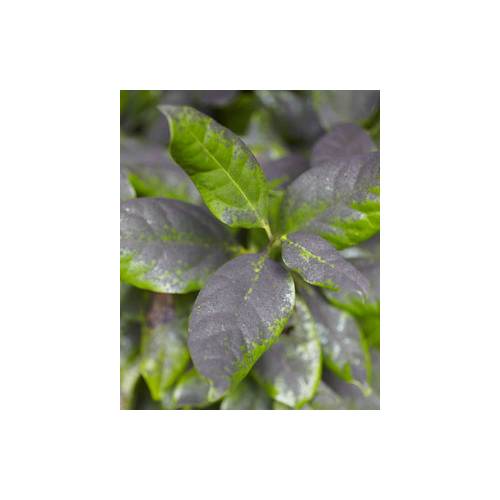
Fungus
Sooty Mould
- Details
-
The leaves appear to be covered in soot? No doubt, it is sooty mould, a common disease found on plants that have been attacked by stinging insects.
The symptoms
Prior to the appearance of the sooty mould, the leaves are sticky because they are dirty with the discharge of the stinging insects. If the infestation is relatively weak, the leaves appear dirty as if they are covered with a layer of dust. However if the conditions are favourable for sooty mould (the presence of lots of stinging insects on the plant) then the dust will get thicker and end up covering the entire leave. The leaves in the centre and near the base of the plant are more seriously affected than the young shoots or the leaves that receive a lot of light. The plant will quickly weaken and the leaves covered with sooty mould will fall off prematurely due a lack of light.
The lifecycle
When the leaves are covered with honeydew produced by the stinging insects, a fungus will germinate and grow. It will spread over this favourable medium and reproduce, causing the appearance of a black powder. The spread of the disease is instantaneous. When the stinging insect quits the plant, the fungus will also disappear, as it can no longer feed itself.
How to fight it
The fight against sooty mould has to be done through a fight against the stinging insect that encourages the disease to develop. Start by finding the offending insect, it could be an aphid, a soft shelled scale insect or a hard shelled scale insect. Be careful it is not easy to spot and identify these. An aphid could also be to blame. Carry out an appropriate treatment using an insecticide. Once the plant is rid of these pests, the blackened leaves should be cleaned down using a sponge and warm water.
How to avoid it
Sooty mould can only develop on plants attacked by stinging insects, it is crucial that you survey the plant to stop large numbers of these pests appearing. Plants that are not pruned and have dense centres are more likely to suffer than others. Spraying plants regularly with water helps them to stay healthy, and both the insects and sooty mould do not like being soaked by water.
Information
Sooty mould can occur both inside and outside, nearly always on tough leaved plants such as: laurels, camellias, citrus fruits... - Photos (1)

